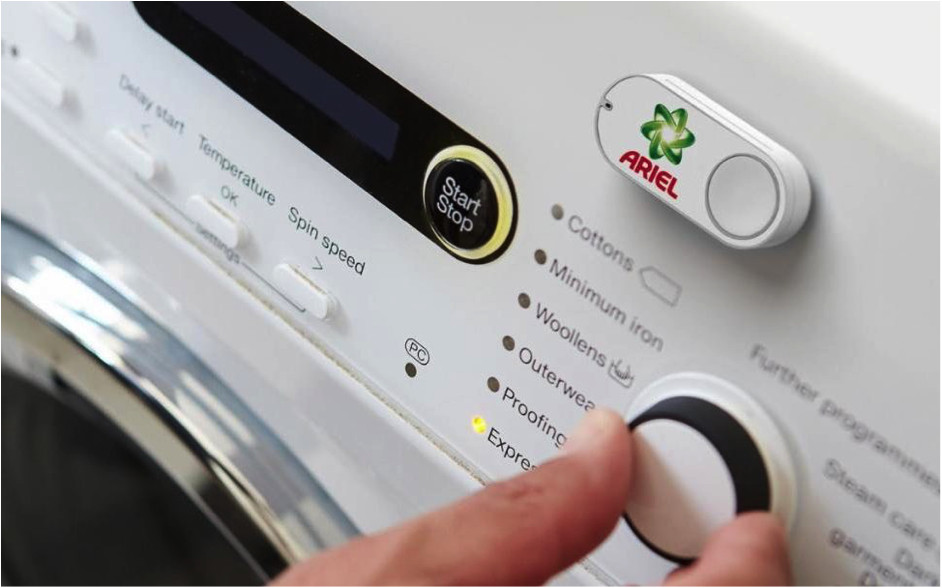

Home may be where the heart is, but it’s also where the profits are. House and cleaning supplies are at the forefront of the surge in eCommerce CPG sales, which rose 42% last year, well ahead of an overall eCommerce increase of 30%.
Laundry detergent leads the way with an 85% increase, with Procter and Gamble’s Tide in the #1 spot in the U.S. in terms of eCommerce (and offline) market share.
So what are the keys to this increase in sales of house and cleaning supplies online? Are there any trends we can spot in where this market is headed? This blog covers a few essential points to keep in mind.
Emerging online retailers are selling in bulk, and making the game competitive.
Amazon is king, but when you factor in other e-retailers such as Boxed.com or Jet.com, you can see the house/cleaning supplies market is far from a one pony show. Likewise for offline retailers such as Walmart and Target that also battle Amazon online. The underlying reason for the mutual success of these varied sites: they’re selling bulk packs of replenishable items that are highly-functional in nature (and therefore in continuous demand) and can be bought in larger quantities at a lower unit price.
Automation of the replenishment cycle is a vital contributor to growth
Amazon’s Subscribe & Save is one example of the type of automatic replenishment program that’s driving the house/cleaning supplies category. For homes with an established, predictable laundry pattern, for example, it makes perfect sense to take advantage of Subscribe & Save – and receive a shipment of detergent on the same day each month. This creates a monthly annuity for the brand and e-retailer, and can skyrocket the lifetime value of a customer.
At its core is the concept of friction-less re-ordering. And that’s increasingly tied to innovative technologies such as the Amazon Dash button and the Dash Replenishment Service (DRS), an API that enables connected devices to trigger push-button or automatic replenishment based on monitored consumption.
During this year’s Prime day, Amazon reported that the most popular Dash buttons purchased were for Cascade dishwashing detergent, Charmin toilet paper and Tide laundry detergent.
Price-to-weight ratio and price pack architecture are key drivers of profitability
Sticking with the example of laundry detergent, it can be very expensive for an e-retailer to ship a large container of liquid detergent – a moderately-priced item that’s relatively heavy. The low price-to-weight ratio can make for a non-sustainable business model. Furthermore, since it’s a liquid, there’s a risk of leakage during shipment – a risk that’s exacerbated by the fact that the eCommerce order will likely be fulfilled by air freight, as opposed to ground transport.
What’s a manufacturer of liquid detergent or a similarly costly-to-ship product to do? One solution can be found in the evolving field of price pack architecture. By redesigning the product and/or packaging – and possibly changing the unit size – brands can re-invent products or even categories, and streamline them for the eCommerce channel.
The example of Tide Pods is a perfect case in point. Whereas liquid detergent requires you to measure it and pour it into the machine, pods are self-contained pellets you simply place in the washing machine. That’s the science of price pack architecture at its best. Look for this field to become more and more prominent as eCommerce players continue to seek new ways to introduce products that are priced optimally for both the shopper and for the economics of the channel.
Private labels will be an increasingly key factor in the house/cleaning supplies category
There’s a great deal of trepidation among brand teams these days concerning Amazon’s introduction of a series of consumables products – detergent among them. For Amazon, it’s a logical next step in a category where product appeal is almost entirely tied to the product’s level of functionality. For consumers, as long as the product performs at an acceptable level, cost can become the overriding factor.
For brands that wish to combat the introduction of private labels, I recommend a four-pronged strategy in The Bottom Line on Amazon’s Private Label Consumables, including a commitment to innovation, optimizing the price pack architecture, executing on the fundamentals (including discoverability in search results, compelling product content, and encouraging product reviews), and selectively using pay to play
To sum up
In today’s eCommerce channel, laundry products are at the leading edge of sales and innovation in the house/cleaning supplies category. However, the category as a whole is also experiencing rapid growth, fueled by such factors as automated reordering, price pack architecture and low-priced private labels. Look for the growth to continue, not only on Amazon, but on Boxed, Jet and a host of other competitive e-retailers in the marketplace.
To see which brands are cleaning up on Amazon, check out our infographic where you can download your complimentary House Supplies FastMovers report.


























